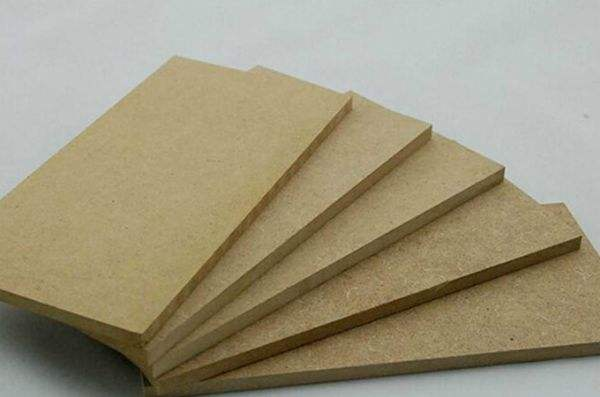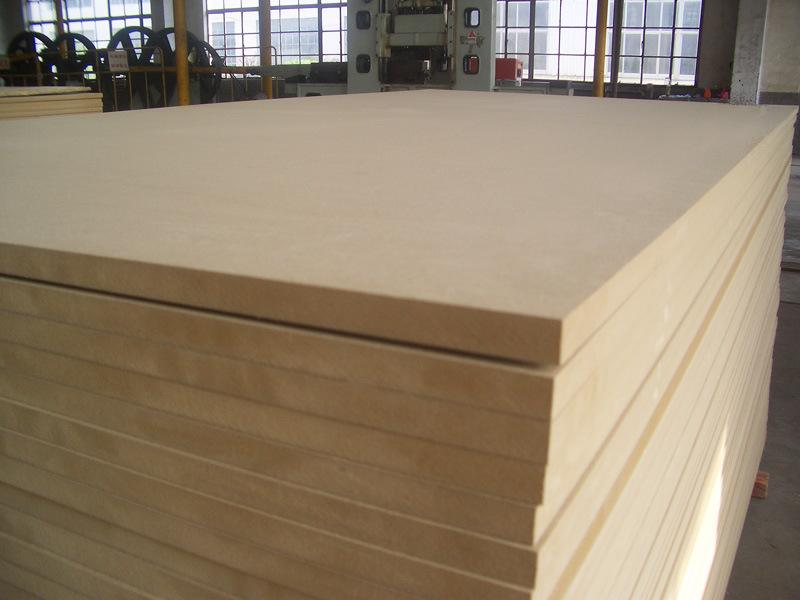The full name of MDF is Medium Density Fiberboard. MDF is made of plant fiber as raw material, applied with urea-formaldehyde resin or other synthetic resin, and pressed under heat, pressure and pressure. Plates with a density in the range of 0.50-0.88g / cm3 can also be added with other suitable additives to improve the characteristics of the plate. MDF has good physical and mechanical properties and processing properties, and can be made into plates of different thicknesses. Therefore, it is widely used in furniture manufacturing, construction, and interior decoration industries. MDF homogeneous porous material has good acoustic performance. It is a good material for making speakers, TV surgery, and musical instruments. It can also be used in ships, sports equipment, floors, wallboards, and partitions to replace natural wood. It has the characteristics of low cost, simple processing, high utilization rate, and more economical than natural wood.

MDF process
1. Preparation
The first step of the MDF production process is to prepare materials. The equipment mainly includes chippers, belt conveyors, screening machines, bucket elevators, storage silos, etc. The raw materials for the production of MDF are mainly wood fiber materials, which include small-diameter wood, twigs, firewood, and processing residues. The skin content should not exceed 5%.
2. Preparation of fiber
Fiber preparation is mainly fiber separation, which is the core link of MDF production process. Fiber separation equipment includes wood chip silo (or preheated silo), small hopper, thermal mill, paraffin melting and application device, and sizing metering device.
Steps of fiber separation:
A: Hot grinding. The qualified wood chips are transported into the wood chip bin, and the wood chips are transported to the mill body after being softened by cooking. The wood chips are compressed by a hot mill to squeeze water out of the wood chips with higher water content.
B: Apply wax. The paraffin wax is heated and melted by the steam coil, and the melted paraffin wax is driven into the wood chip before entering the grinding chamber body through the pump pipeline. After being separated into fibers, the paraffin wax is evenly distributed on the surface of the fiber.
C: Sizing. The urea-formaldehyde resin passes through the filter and the glue pump into the double metering tank, and then into the pump input discharge pipe to sizing the fiber. The fiber in the discharge pipe is in a high-speed flow state, and the glue liquid is atomized and sprayed evenly on the fiber surface. Curing agent, formaldehyde trapping agent, etc. can be added to the plastic tank for mixing.
3. Dry
The main equipment of the drying process of the MDF production process is composed of a drying host, a drying pipeline, a cyclone separator, a fiber conveying device, and a dry fiber silo. The discharge pipe of the heat mill sucks the wet fiber in the drying pipe and fully contacts with the hot air. The fiber is suspended in the air pipe and is conveyed by the air flow. The fiber runs in the air pipe for 4 to 5 seconds to quickly evaporate the moisture of the fiber to meet the requirements. Water content (8%~12%).
4. Forming
Pavement forming is a very important process in the MDF production process. This process includes the main parts of slab pavement, pre-pressing, flushing, cross-section, etc. The requirements for the pavement process are: uniform, stable and thick slab density Consistent, the slab weight control per unit area is continuous and stable, with a certain degree of compactness.
5. Hot pressing
The hot pressing process for domestically manufactured MDF is an intermittent multilayer hot pressing process, and various process factors have an important influence on the performance of MDF.
A: Hot pressing temperature. The choice of hot pressing temperature is mainly determined by the type and performance of the board, the type of adhesive and the production efficiency of the press. The choice of temperature is mainly determined by the comprehensive factors of raw materials, tree species, fiber moisture content, adhesive properties, slab thickness, heating time, pressure and equipment conditions.
B: Hot pressing pressure. The hot-pressing pressure changes during the hot-pressing process. The pressure gradually increases during pressurization to meet the slab thickness requirement, that is, the pressure should be reduced, and the curing of the adhesive, the formation of various bonding forces between the fibers, and the evaporation of water mainly It is completed in the low-pressure section, and the pressure in the low-pressure section is generally 0.6 to 1.3 MPa.
C: Hot pressing time. The determination of the hot pressing time is mainly related to the properties of the glue and the curing time, fiber quality, slab moisture content, thickness, hot pressing temperature, pressure and other factors. The hot pressing time is generally expressed as the time required for 1mm plate thickness.
D: The moisture content of the slab. In the hot pressing process, the role of moisture in the slab is to increase the plasticity and thermal conductivity of the fiber, so the appropriate moisture content guarantees the quality of the board, generally controlled at about 10%, if it is too high, the surface and core layer density The gradient increases and the bonding force between the fibers in the core layer is poor. When the pressure is reduced and the steam is exhausted, it is difficult to remove the water vapor, which causes blistering and delamination in the board.

 online service
online service 0086-591-8806 9579
0086-591-8806 9579 88067049
88067049 izzy@lexinda.com
izzy@lexinda.com sarahlpr
sarahlpr 86-15336506363
86-15336506363